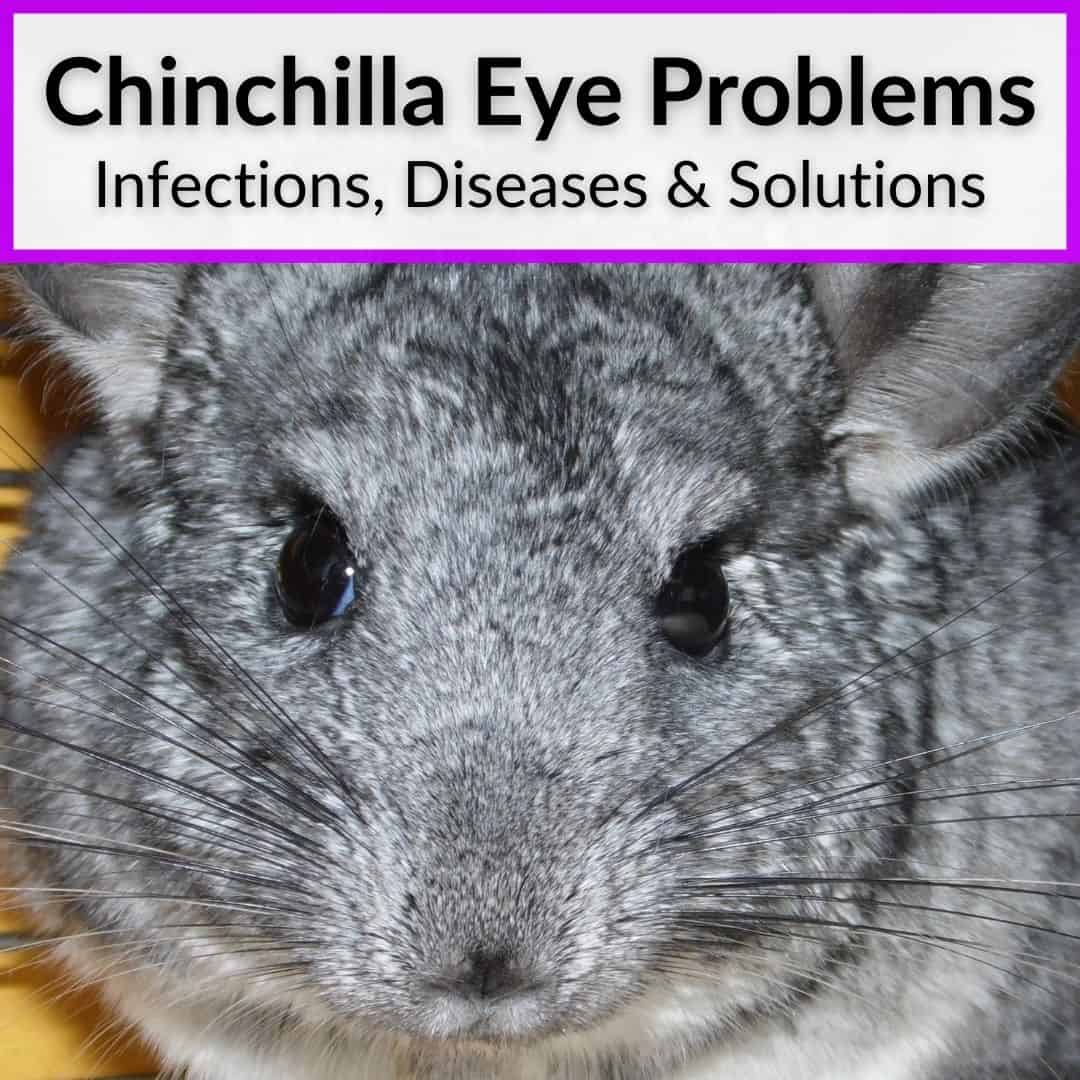
They don’t need a ton of care and they don’t have a ton of issues.
But they can get sick.
And some of the more common issues are chinchilla eye problems.
Those dark, beady, and piercing eyes are one of the things that make them so adorable, but they are also prone to infection or disease.
And when that happens, you need to know how to identify the issue and how to remedy it, before it causes serious harm to your pet.
Keep reading to learn all about common eye problems in chinchillas and what to do about them.
Contents
Common Eye Problems In Chinchillas
As mentioned chinchillas don’t suffer from illnesses as much as some other pets, but issues can arise from time to time. Especially issues with the eyes.
When that happens, you need to know how to recognize and deal with them. Let’s start with 4 of the most common eye problems.
Tumors
Tumors are the least likely eye problem you might encounter with a chinchilla, but they’re still a possibility.
Most commonly, the tumor will form behind those big, black, beautiful eyes and cause your chinchilla to be uncomfortable.
Another downside is that this eye condition with your chinchilla is going to require x-rays to confirm, which then can also lead to needing an MRI for further investigation.
If you notice anything like an eye bulge or any of the other symptoms that we will discuss below, be sure to consult a vet as soon as possible and follow their recommendations.
Eye Infections
Eye infections are much more common. They begin with your chinchilla becoming exposed to either bacteria or fungal spores.
One of the most common ways to help prevent eye infections from occurring is to make sure you are always keeping your chinchilla cage clean and disinfected.
This includes cleaning items such as the water bottle and food dishes to prevent bacteria build-up.
Eye infections with chinchillas can impact one or both of their eyes and are treated with antibacterial or antifungal medication in most circumstances.
Corneal Ulcers
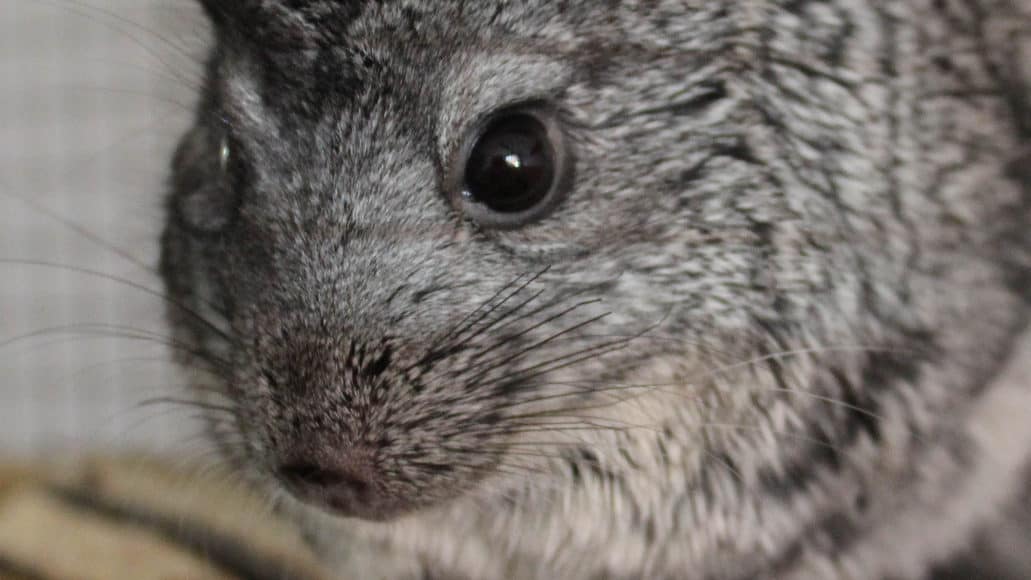
Corneal ulcers occur most frequently when irritation occurs from timothy hay, fur slips, or their dust baths.
The most straightforward way to explain a corneal ulcer is a scratch or irritation to the surface of the eye, which is referred to as the cornea.
This eye condition typically causes your chinchilla’s eye to look cloudy, red, or slightly swollen and watery. You may also find yourself wondering: what does it mean when a chinchilla winks at you? Well, it is not winking, but blinking due to irritation.
In most circumstances, time will take care of this issue for you, although you may notice that your chinchilla is severely irritated, itching, or even attempting to rub its own eyes.
In the grand scheme of eye conditions with chinchillas, don’t let this condition worry you too much or cause a significant amount of anxiety.
Overgrown Teeth
Chinchilla’s teeth fall into a category of their own when it comes to potential issues that you may run into when owning one of these loveable furry pets.
But overgrown teeth can also be an issue for your chinchilla’s eyes, if the teeth grow into the nasal duct, which is below the eye.
This will cause your chinchilla to present with watery eyes and can cause excessive drainage, if not dealt with in a timely manner.
Ensure that your chinchilla can always grind down its teeth by providing plenty of safe chew items inside of its cage and also while it is out for playtime.
Items like chew sticks and other safe hanging chew toys, in addition to timothy hay, will help naturally keep your chinchilla’s teeth at the correct size.
Recognizing Eye Problems And Infections
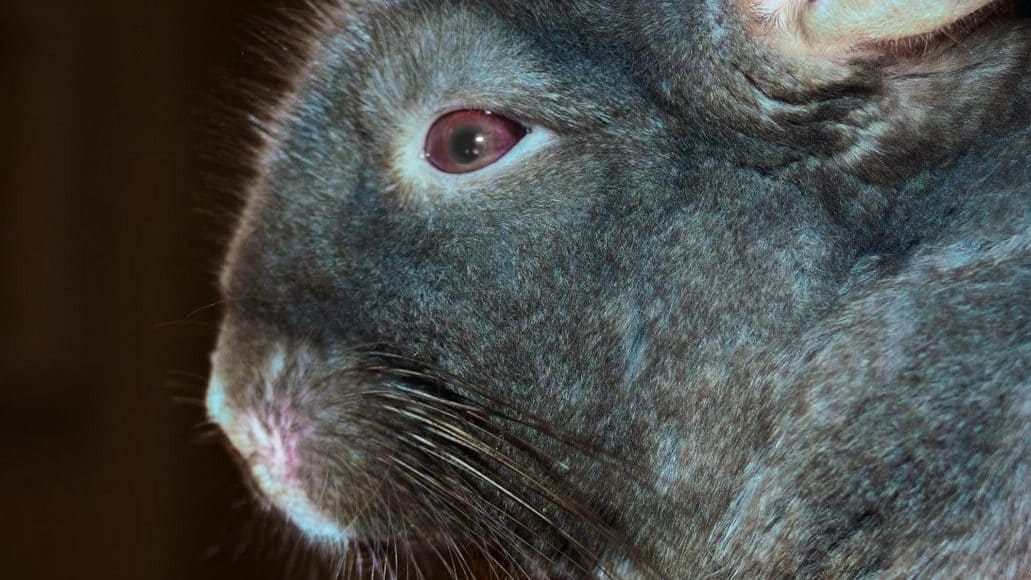
To acknowledge and recognize an eye problem or condition with your chinchilla, you likely won’t need to do much.
In most situations, it’s going to stand out to you in some of the manners we have discussed already in this post.
Watery eyes, swollen eyes, or irritation will be noticeable when you get your chinchilla out of the cage for playtime or even just through interaction with your chinchilla while it remains in the cage.
When you notice an issue, double-check for other signs of illness or injury.
- Is your chinchilla still consuming hay and pellets at the normal amounts?
- Is it still drinking plenty of water?
- Does it seem as active as usual or more depressed and lethargic?
These aren’t only good things to check on for your own peace of mind, but they are significant bits of information to relay to your vet when you do get the eye infection or condition checked out and treated.
And then, of course, you have the following signs you can also look for just like we discussed previously.
- Discharge and watery or cloudy eyes
- Hair loss and matted fur around the eye
- Irritated skin around the eye and eye crust
Monitor Your Chinchilla’s Behavior
Even before you become aware of an eye infection, you should always be monitoring your chinchilla’s behavior.
A lot of the time, your chinchilla will present signs that are relatively easy to notice when something is bothering it.
If you have already taken your chinchilla to a vet to deal with eye conditions and infections, you will still want to keep a close watch on it to ensure it is responding to whatever treatment has been instructed, and to ensure that the eye condition is improving over time.
Follow Vet’s Directions And Administer Meds Or Hot Compresses
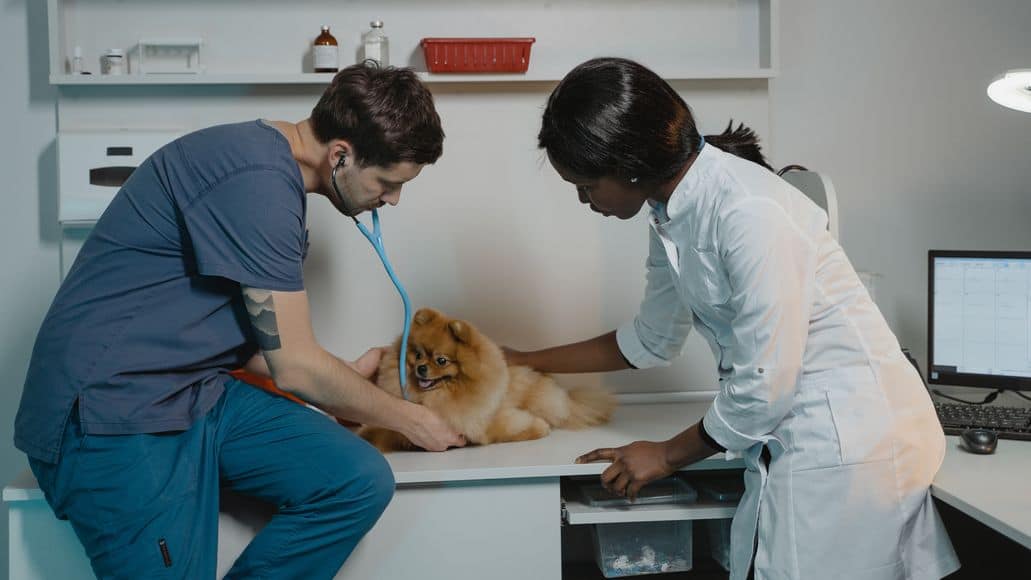
Of course, you should be following your vet’s instructions to take care of eye conditions with your chinchilla.
However, you do also have to keep in mind that after visiting the vet, you need to be administering the meds as instructed, and you may even need to use hot compresses to help your chinchilla remove crust and ease the pain.
Avoid Dust Baths During Treatment
A lot of the time, when your chinchilla has one of these eye problems, your vet may instruct you to avoid dust baths until the condition has improved.
This is simply to ensure that further irritation and debris do not have the opportunity to interfere with the healing process.
Preventing Eye Infections
Eye infections and eye conditions may arise even if you do everything correctly with a chinchilla and provide the best care possible.
This isn’t your fault and don’t sweat it.
However, a few things are detailed below that can help you to do your best to prevent these eye issues as much as possible.
Dust Baths Are Imperative
Dust baths are simply how a chinchilla maintains proper hygiene and takes care of its fur and skin.
It helps remove oil and grime, and it is imperative to offer these dust baths to your chinchilla several times per week.
Simply ensuring that you keep up with this routine can go a long way towards not only preventing eye infections and conditions from arising, but also toward eliminating other skin and fur issues.
Not to mention, chinchillas just purely love these dust baths in general.
If you need further information about this topic, you can view my post discussing the best chinchilla dust to use.
Clean Chinchilla Cages Prevent Eye Problems
Cleaning your chinchilla cage diligently is also very important when it comes to preventing illness and eye conditions from arising.
Ensure you are keeping up with your cleanings, discarding poop and other debris, and giving the cage a good disinfecting on a regular basis.
If you need to learn more about how to do this properly, you can read my post about how often to clean a chinchilla cage here.
How Do You Clean A Chinchilla’s Eye
If your chinchilla has a crusted eye, you can clean it using a warm compress. Do do this, get a clean cloth and dip it in warm water. Use that to gently dab at the crusty buildup in your pet’s eye are. Us your other hand to hold your pet’s head steady while doing this.
Eye Problems: Frequently Asked Questions
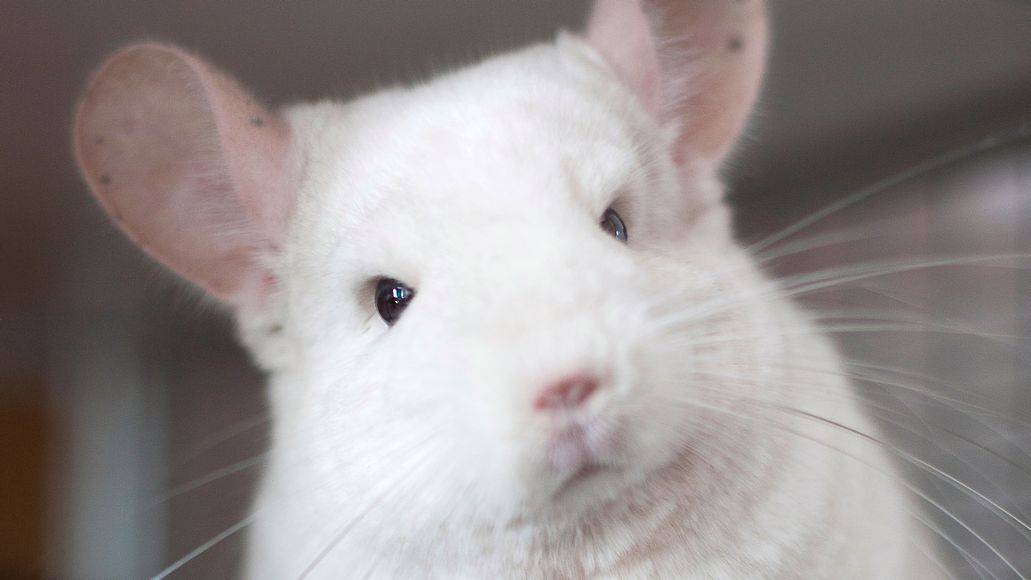
Finally, we have some frequently asked questions that arise from time to time when it comes to eye problems with chinchillas.
Can Chinchillas Get Cataracts?
When it comes to discussing common eye problems with chinchillas, this question is common.
Yes, chinchillas can get cataracts. Cataracts will present in chinchillas primarily due to old age and will cause the slow loss of vision, causing your pet to have a challenging time navigating around its cage and habitat.
Do Chinchillas Get Eye Boogers?
This question also caught my attention not long ago in a social media group.
Chinchillas may present discharge from their eyes that can be referred to as eye boogers. Chinchillas may present with this discharge if they have upper respiratory infections and teeth problems.
This discharge frequently referred to as eye boogers, can present as a yellow or green discharge.
Chinchilla Eye Problems: Final Thoughts
At the end of the day, eye problems and conditions with chinchillas are something you may have to deal with throughout owning one of these fantastic pets.
But hey, maybe you never have to deal with it.
If you do your best to provide the best care possible in addition to maintaining a clean and healthy environment for your chinchilla, the chances decrease dramatically.
Follow some of the tips in this guide and always be willing to consult a vet when necessary to handle eye conditions, infections and problems as quickly as possible and you will be in great shape.
Chili and I wish you the best of luck and hope your chin’s eyes heal quickly!
Share your thoughts and concerns on eye problems with chinchillas.
Do you have any additional information and insight you can provide about common eye problems with chinchillas?
Would you handle any of the issues and conditions differently than how we described above?
As always, I encourage the Planet Chinchilla Community to help each other by providing the best knowledge and tips possible for raising our pet chinchillas.
Be sure to share those thoughts, comments, and concerns below.
Chili and I appreciate you stopping by. Thanks again for reading, and we will see you next time.
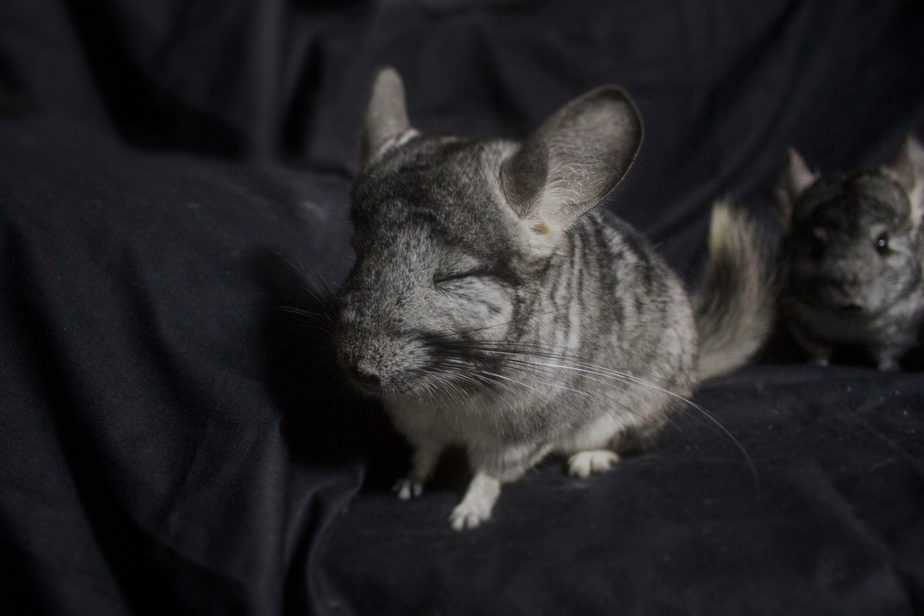

Leave a Reply